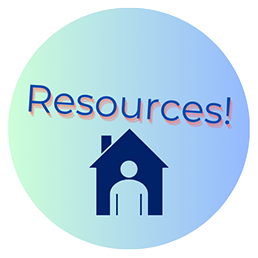Renters
Who’s affected and what’s the problem?
Secondhand smoke travels between units through doorways, cracks in walls, electrical lines, ventilation systems and plumbing1
- One out of three people who don’t smoke and live in rental housing are exposed to secondhand smoke.2
- There is no safe level of secondhand smoke.
- Children, the elderly, people with disabilities, and pregnant women are particularly vulnerable to the health risks associated with secondhand smoke.3
- 2 out of 5 children are exposed to secondhand smoke. Most children are exposed in the home.1
- Children exposed to tobacco smoke are at risk for asthma, lung problems, earaches, and Sudden Infant Death Syndrome (SIDS).3
- Adults are at risk for heart disease, stroke, and lung cancer.1
- Children living in multiunit housing have higher blood levels of cotinine, a marker of tobacco exposure, even when they live with caregivers who do not smoke.3
- Thirdhand smoke is the residue left behind from cigarette smoke and cannot be removed through normal cleaning methods.
- It contains 250 chemicals and sticks to dust, carpets, upholstery, walls, hair, clothes, pets’ fur, and feathers. The toxic chemicals left behind can re-emit and off gas back into the air. It cannot be removed through routine cleaning methods and can remain months after smoking has stopped.4,5
- Moving into a unit that was previously smoked in exposes you and your family to toxic chemicals.
- Babies and children are particularly vulnerable to thirdhand smoke, the residue left behind from smoking, when they crawl on contaminated floors or put contaminated items in their mouth.4

A note about public housing: In 2018, The United States Department of Housing and Urban Development (HUD) required all HUD residences to adopt a smoke-free policy.
- Cigarettes and cigars cannot be smoked in buildings on HUD properties, including offices, residences, and common areas, or within 25 feet of any buildings on HUD property.
- Electronic cigarettes were not required to be included in the policy, management of public housing authorities may also prohibit the use of these products in their facilities.
Benefits of Smoke-Free Homes:
- Protect yourself and your family from secondhand and thirdhand smoke.
- Reduce fire risk.
- Reduce maintenance and cleaning costs.
What can you do?
- Use the resources below to learn more about smoke-free housing.
- Don’t allow smoking or vaping in your home or car.
- Talk to your landlord about adopting a smoke-free policy.
- Talk to other tenants in your building about the smoking policy.
- Ask your landlord about the tobacco policy before signing your lease.
- Educate your community leaders about the benefits of smoke-free laws and policies.
Resources for Renters
- Missouri Smoke-Free Housing Toolkit
- Secondhand Smoke in Housing Infographic
- Tobacco Use and Secondhand Smoke Exposure is High in Multiunit Housing Infographic
- Going Smokefree Matters Infographic
- Legal Options for Tenants Suffering from Drifting Tobacco Smoke
- Missouri Tobacco Quit Services
- Order Free Materials

References
- 1. Centers for Disease Control and Prevention. (2022, September 14). Going Smokefree Matters: Multiunit Housing.
- 2. American Nonsmokers’ Rights Foundation. (2023). Residents Are Often Exposed in Their Homes. American Nonsmokers’ Rights Foundation | no-smoke.org.
- 3. American Academy of Pediatrics. (2017, April 25). Smoke-free Housing. HealthyChildren.org.
- 4. American Academy of Pediatrics. (n.d.). Thirdhand smoke: A Threat to Child Health.
- 5. American Nonsmokers’ Rights Foundation. (2023). Thirdhand Smoke Harms People Even After Smoking Stops. American Nonsmokers’ Rights Foundation | no-smoke.org.
- Image: Centers for Disease Control. (n.d.). Going Smokefree Matters Multiunit Housing.
